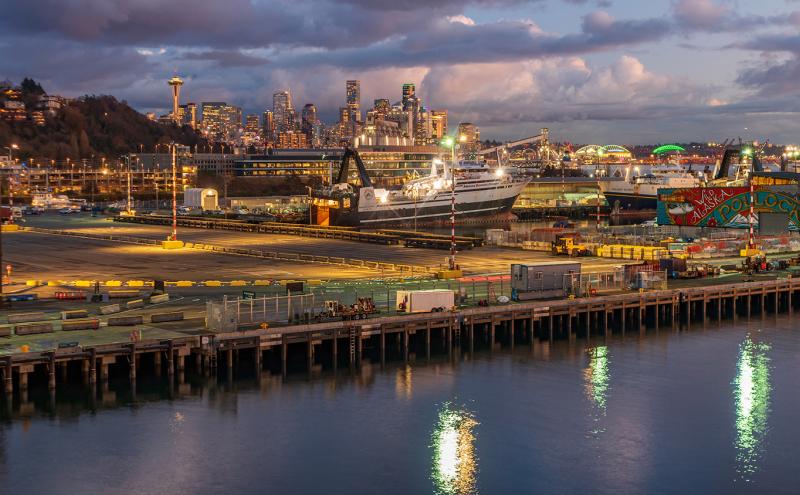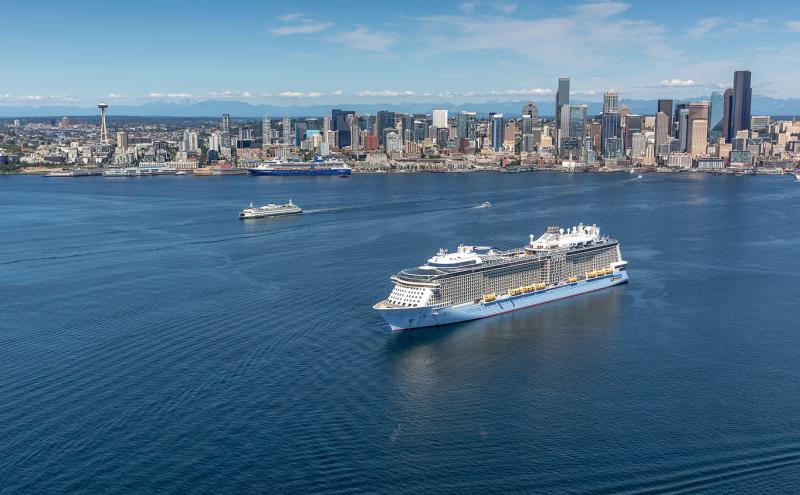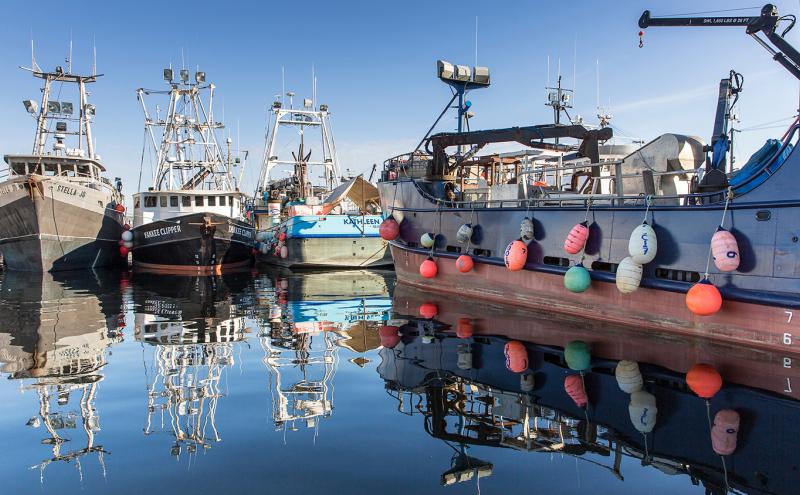In the second of this two-part series in celebration of Women’s History Month, meet two women making waves in the Port of Seattle’s Maritime division. Keep reading to learn what they love about their jobs and industries, and their advice to other women looking to take the plunge. Sea where a career in maritime can take you! Read part one of the series→
Genevieve Pla-Rucki
Capital Program Leader, Waterfront Project Management
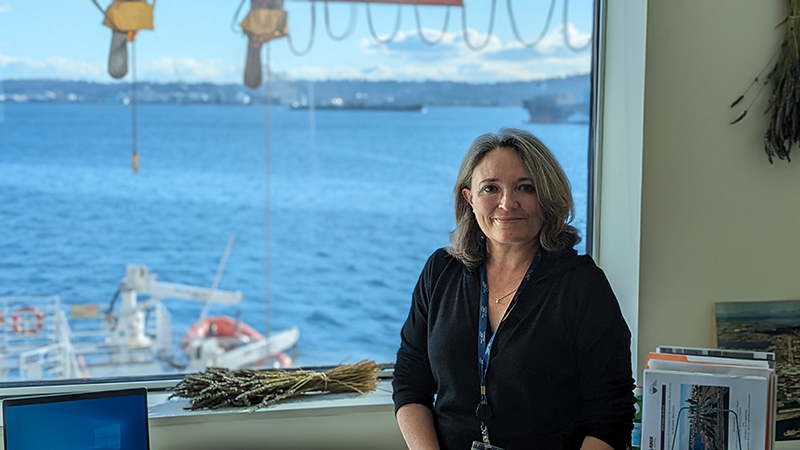
1. How long have you worked in the maritime industry and what was your journey to your current role?
My career in maritime started by accident when I joined Washington State Ferries as an engineer 30 years ago for what I thought would be a temporary position. I ended up staying for 25 years. It was so meaningful to be a part of a truly iconic system, serving communities throughout our region. At the same time, I always had an interest in what was happening at the Port of Seattle and when the opportunity came, I joined Waterfront Project Management in 2019.
2. What does your current job entail and what do you love about it?
I am a Capital Program Leader, which means that I work with a team of project managers to deliver the capital program for the Maritime and Economic Development Divisions. Our role is to ensure the projects are executed successfully, on budget, and on schedule. We work on cruise terminals, recreational marinas, fishing and commercial terminals, real estate portfolios, habitat restoration, and parks ... What I love the most is that even after 30 years, I'm still learning. The maritime environment is very complex technically, but also highly regulated, and it forces you to evolve and adapt to face new challenges constantly. The other aspect I find rewarding is knowing that we are building facilities that will be used long after we're gone, stewarding the Port's assets into the future like others have done before us.
3. What's the most surprising thing about working in maritime?
By far, the most surprising for me has been the breadth of expertise needed to successfully deliver maritime projects. Everyone on the team has a key role to play and the list keeps getting longer as we take on new challenges like decarbonization and adaptation to climate change.
4. What advice do you have for women considering a career in maritime?
I would say "give it a try." An internship or apprenticeship would be a great way to do that. There are so many career paths to pick from. I have seen many positive changes for women in this field since I started. I like looking at old sets of plans and at the names of those who worked on them. I can only imagine how surprised they would be to find so many women on the project teams today.
Shelby Allman
Harbor Operations Supervisor, Recreational Boating
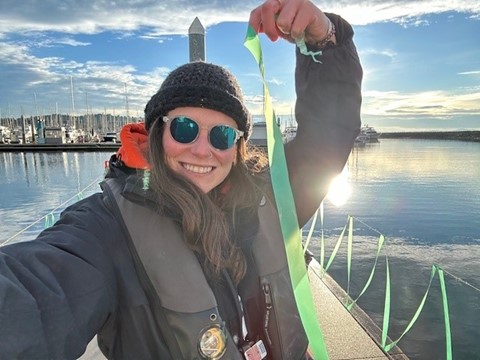
1. How long have you worked in the maritime industry and what was your journey to your current role?
I have officially worked in the maritime industry for 17 years, but I have been working or playing in the field since I can remember. I was born and raised on a reservoir in Southwest Washington near Mount St. Helens and on the Columbia River where my family built and repaired floating docks. My mom was a high school teacher and my dad worked at Powell’s Books — our access to boating was through our lakeside forest home on Hobie cats, kayaks, and small power boats.
My first job was as an outdoor lifeguard and water safety instructor for Vancouver Parks and Recreation. When I was in college, I discovered the Lakewood Boathouse at Western Washington University (WWU) in Bellingham. While there I taught sailing, kayaking, and windsurfing as a college course credit, as well as private lessons and summer youth camps. I also took up a position with the Viking Union Facilities Representatives to learn more about improvements made to the docks and equipment, and I really enjoyed the community I found as a member of the WWU Sailing team. After graduating, I moved to Seattle and quickly realized I needed a place to sail on a barista budget. I found The Center for Wooden Boats (CWB) because I could volunteer time for free boat use, and was hired as a livery attendant (rentals and safety operations), and was later promoted to Livery Manager. Over 10 years at CWB, I took on tasks or positions that built my resume and led me to meet so many incredibly talented individuals in the maritime industry. I earned my United States Coast Guard (USCG) captain’s license along the way. I applied for my current position at the Port of Seattle as the Harbor Operations Supervisor for Recreational Boating for Shilshole Bay Marina, Bell Harbor, and Harbor Island while aboard a 1947 Bill Garden Salmon Troller while docked at Bell Harbor. When I saw the job, it felt like a culmination of all my work experience thus far and I'm just getting my feet wet at the Port!
2. What does your current job entail and what do you love about it?
My current job is to oversee and ensure the daily operations of Shilshole Bay, Bell Harbor, and Harbor Island marinas through the support of eight full-time Port of Seattle Harbor Operations Specialists and Harbor Operations Coordinators. I coordinate with the trades at the Port on maintenance, safety, and customer needs. I am the voice of operational needs and provide input into capital improvement projects. My role is also to support my team in their daily roles and in their goals at the Port.
I see recreational boating as the point of access for most people getting into boating of any form and I want to help the narrative around recreational boating be that! Recreational boating has the power of education, access, sport and play, health and fitness, relaxation, community, and individuality. Being by the water, on a boat, or on a dock has always been where I’ve wanted to be, and more importantly where I feel at home. In my career, my goal has always been to create spaces for people to feel that same way.
3. What is the most surprising thing about working in maritime?
My first thought is what connects all the people I have met while being in the industry. I have lovingly referred to the boating community that I have found myself a part of as “an island of misfits.” We all are quite different in many ways and may have come to the water or docks for different reasons, but what connects us is the water. We want or choose to be in this industry because of the love we share for the water in some form. Sharing the passion for what the Port brings to the city and people of Seattle and Washington State can be done in a variety of ways and must be done for the Port to effectively function. Aiding the future of the maritime landscape and industry through youth workforce development, environmental sustainability, capital projects, or any aspect of the trades is vitally important for our community.
4. What advice do you have for women considering a career in maritime?
Do it. Take the extra tack. Rent the rowboat. Apply for that job. My best advice for women is to just go out there, take the opportunities when presented, and view mistakes as just that. A mistake. There are WOW (Women on the Water) events happening in Seattle for most of the year, and local women-owned maritime social media accounts you can follow to be in the loop. There is a whole other world of opportunities out there for women. Take the leap. In the words of one of the most amazing people in maritime I know, “Say yes to that boat ride” (with a proper PFD).

